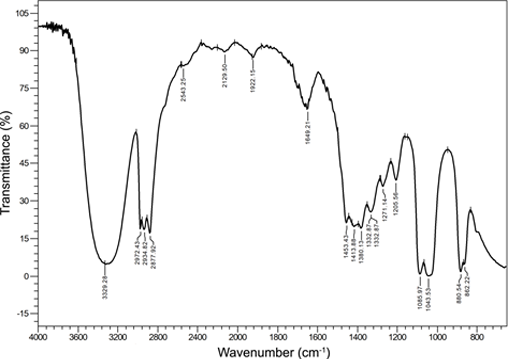Analysis of ferroelectric material BaTiO3 and mangosteen leaf extract using FTIR characterization
DOI:
https://doi.org/10.59190/stc.v5i1.271Keywords:
Barium Titanate, Ferroelectric, FTIR, Garcinia mangostana L., Mangosteen Leaf ExtractAbstract
Perovskite materials, including barium titanate (BaTiO3), are important ferroelectric materials in industry and research today. Ferroelectrics have unique properties such as piezoelectricity, high permittivity, and electrocaloric and electrooptic effects that are beneficial in technological applications. BaTiO3, for example, is a lead-free ferroelectric material relevant for FeRAM and ferroelectric tunnel junctions. However, research on BaTiO3 flexible thin films is still limited, especially in the context of flexible substrates. Therefore, research in the preparation of stable and flexible BTO ferroelectric films is crucial for the advancement of nonvolatile memory devices. The manufacturing method in this study is the Sol Gel Method where the relative molecular mass of BaCO3 material is calculated, then the mass value is entered with the composition of (X)BaTiO3-(1-X)BaZr0.5Ti0.503. After the test is performed using mangosteen leaves, the resulting wave peaks from the FTIR Spectroscopy analysis can be seen. This is one of the characterization methods used to analyze the molecular structure and functional groups of various materials from which samples are made. This analysis indicates that mangosteen leaves contain various organic compounds, including alcohols, alkanes, and carbonyl compounds. In this research, further development is needed so that improvements can be made in the synthesis of ferroelectric material BaTiO3 used as a stabilizing agent.

Downloads
Published
How to Cite
Issue
Section
License
Copyright (c) 2024 Yanuar Hamzah, Rahmi Dewi, Putri Siti Asiyah, Dian Selasih, Ella Junian Putri, Ignatius Bagas Sumual Simanjuntak, Rosianna Purba, Fernita Nahampun, Desti Seri Fatimah, Abdu Rozaq Ghifariansyah

This work is licensed under a Creative Commons Attribution 4.0 International License.










